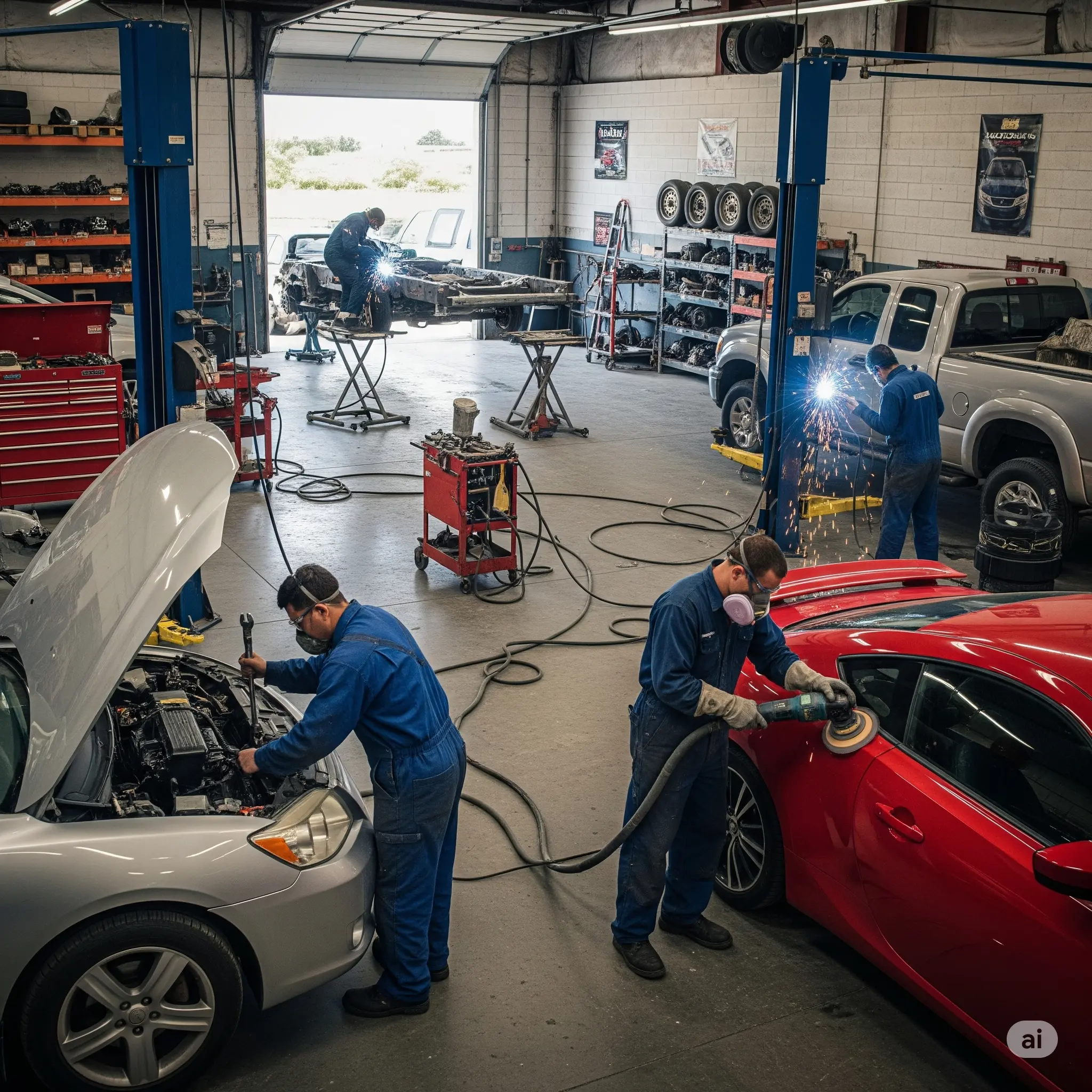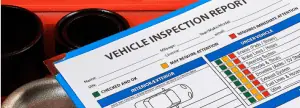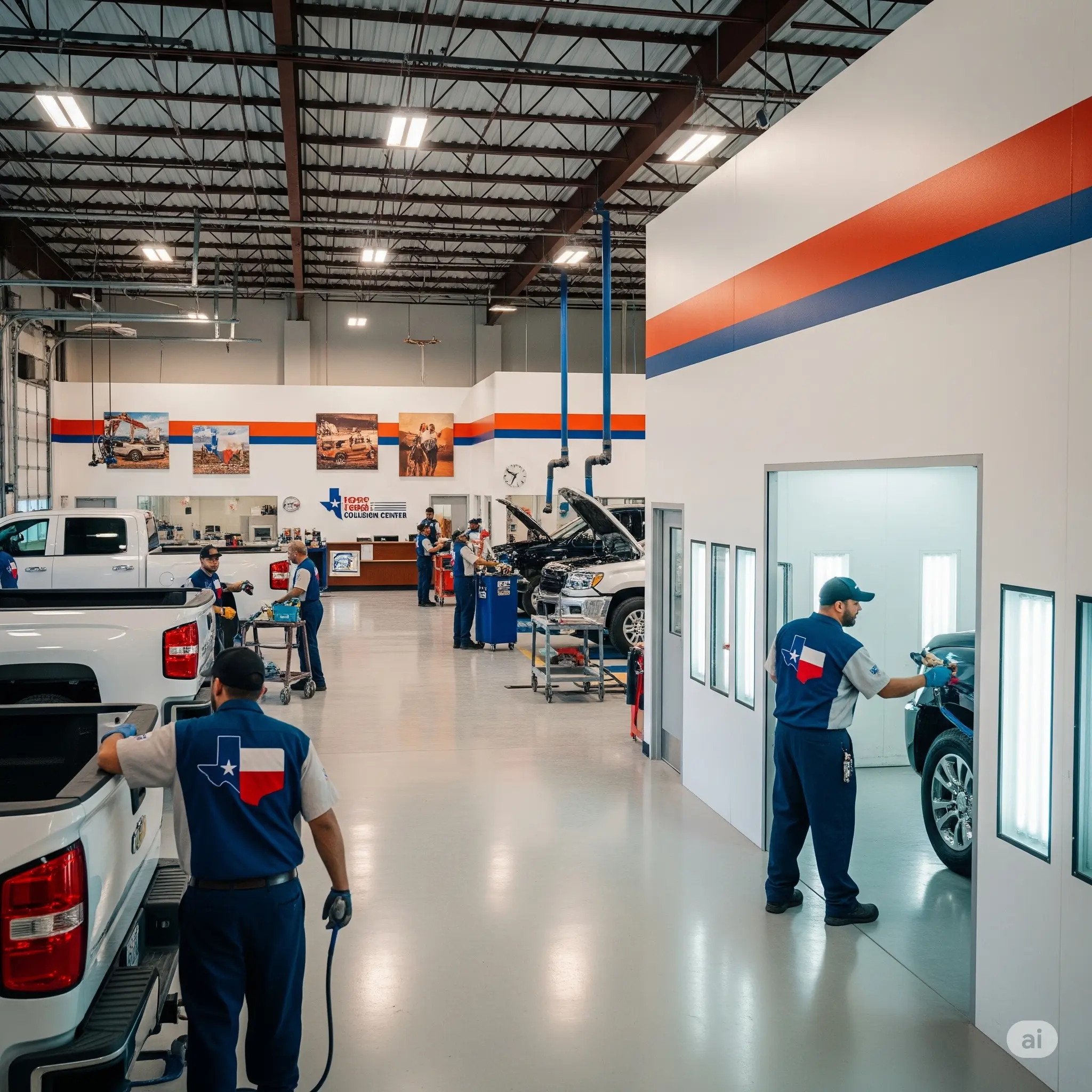Vehicle inspections Texas play a crucial role in ensuring road safety and compliance with state laws. They help verify your vehicle’s condition, emissions levels, and eligibility for texas vehicle registration renewal. By keeping up with inspections, drivers can avoid penalties, stay safe on the road, and maintain their car’s value over time. Whether you own a new or 25 year old car inspection Texas, understanding inspection requirements is essential.
Quick & Easy Vehicle inspections texas – Book an Appointment Now.
One of the biggest challenges drivers face when searching for a shop of Collision Repair In Houston, TX for a vehicle inspection is the long waiting time and the hassle of waiting for their turn. At Westside Collision, we’ve solved this problem for you! With our online booking system, you can schedule your Texas vehicle inspection in just minutes and save hours of waiting. Enjoy quick appointments, same-day service, and get back on the road faster and stress-free.
Book your inspection online today and experience hassle-free, fast service!
Find body collision in Texas – Nearest Certified Stations.
Looking for the best body collision stations in Texas? Follow these tips to choose a certified and reliable inspection center:
- Use online tools and texas vehicle inspection report lookup services to find nearby certified stations.
- Check that the station meets all state standards for vehicle inspections Texas.
- Read customer reviews to ensure quality service and reliability.
- Confirm availability and wait times before booking your appointment.
Book your inspection now at Westside collision and stay compliant effortlessly!

Emergency Car body work Nearby in Texas.
Sometimes, unexpected damage may prevent your vehicle from passing vehicle inspections Texas. Having a nearby Collision Repair Shop is crucial for car owners, as it provides a sense of security and quick access to help when needed. Emergency services for minor repairs and texas vehicle inspections requirements adjustments are available close to you to ensure your car meets the state’s standards on time. Quick fixes like light replacements or minor bodywork can make all the difference, giving you peace of mind and keeping your vehicle road-legal.
Types of Repairs Needed to Pass a Texas car Inspection.
Before your car can legally hit the road in Texas, it may require certain repairs to meet inspection standards. Here are the most common fixes that could be needed:
Brake Adjustments.
Properly functioning brakes are essential for your safety and for passing the Vehicle inspections texas. Worn brake pads or uneven braking performance should be addressed immediately.
Light Repairs.
Faulty headlights, taillights, or turn signals can lead to an inspection failure. Make sure all your lights are working properly before heading to the inspection station.
Emission System Fixes.
If your car fails the emissions test, it may require repairs to its exhaust or emission control systems. This is crucial for reducing pollution and staying compliant with Texas laws.
What Does the New Texas Law Mean for Drivers?
Many drivers are asking: why is Texas doing away with vehicle inspections? In 2025, Texas introduced major changes to its vehicle inspection laws, including the elimination of annual safety inspections for most vehicles. However, other requirements remain in effect, such as paying annual fees, conducting emissions tests in certain areas, and ensuring that critical systems like brakes and lights are safe, while maintaining standards to keep vehicles roadworthy.
Texas State Inspection Fees Explained – Cars, Trucks, and Emissions.
Preparing your car for the road isn’t just about appearance—it’s about compliance and safety too. With the upcoming Texas vehicle inspection 2025, now is the perfect time to ensure your car is in top condition and ready for the challenges ahead
Cars – Inspection Replacement Fee (Non-Commercial Vehicles).
In Houston, owners of non-commercial cars are no longer required to undergo a traditional safety inspection. Instead, they pay an Inspection Program Replacement Fee of $7.50, which is included in the annual vehicle registration process.
Trucks – Inspection Replacement Fee for Newer Trucks.
If your truck is a new vehicle (less than two model years) being registered for the first time, the fee rises to $16.75, covering two years of registration. For older or commercial trucks, the standard $7.50 annual replacement fee typically applies, though costs can vary slightly based on weight class or commercial status, keeping the process fairly standardized.
Emissions – Testing Fees in Designated Counties.
While safety Vehicle inspections texas have been largely eliminated, emissions testing remains mandatory in certain Texas counties. In Houston and other metropolitan areas, the emissions test typically costs between $11.50 and $18.50 as of August 2025.
If you want to know the cost of any car-related service, whether it’s repairing specific parts or replacing them, you can use the Collision Repair Estimate Calculator to get a quick and accurate estimate.
Book your Texas vehicle inspection at Westside Collision today and experience transparent pricing and hassle-free service!

Save Time & Money – Transparent Pricing –Confirm Service Coverage Near You.
Choosing the right station for your vehicle inspections Texas helps you avoid hidden fees and unnecessary repairs. Lack of clear pricing can lead to a lack of trust, so always look for services that offer transparent costs. At Westside Collision, all prices are transparent and upfront. Many centers now provide free quotes, much like a free auto body Online Collision Repair Estimate, to let you know what to expect before you arrive. Always confirm service coverage in your area to save time and money.
Want to know exactly what your car’s inspection or repair will cost? Use our Collision Repair Estimate Calculator today and get a fast, accurate estimate before you even step into the shop!
Customer-First Service – –Get It Done Today and Stay Legal.
Customer satisfaction is at the heart of every successful vehicle inspections Texas service. Modern inspection centers prioritize speed, accuracy, and convenience—whether you need a standard check or a quick update on your texas vehicle inspection online status. Staying compliant with the law gives you peace of mind and confidence while driving. Book your inspection today with Westside Collision and enjoy fast, reliable service without any worries.
Westsite Collision Rated #1 for Transparency, Speed, and Service.
Westsite Collision is your trusted partner for professional Vehicle inspections texas. Here’s why drivers choose us:
- Certified technicians with extensive experience
- Fast and accurate inspection process
- Transparent pricing with no hidden fees
- Assistance with texas vehicle registration renewal
- State-of-the-art equipment for precise assessments
Book your inspection today and drive with confidence!
Conclusion Don’t Wait Until the Deadline – Book Your Vehicle Inspections Texas Today.
Don’t wait until the last minute to schedule your vehicle inspections Texas. Proactive planning saves you money, time, and stress, especially as more drivers turn to texas vehicle inspection online tools for convenience. Book your appointment now to stay compliant and enjoy a safer, smoother driving experience.





